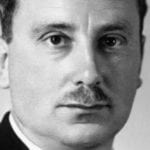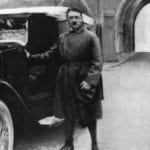 Politics
Politics  Politics
Politics  Weird Stuff
Weird Stuff 10 Eggs-traordinarily Odd Eggs
 History
History 10 Desperate Last Stands That Ended in Victory
 Animals
Animals Ten Times It Rained Animals (Yes, Animals)
 Mysteries
Mysteries 10 Devastating Missing Child Cases That Remain Unsolved
 Creepy
Creepy 10 Scary Tales from the Middle Ages That’ll Keep You up at Night
 Humans
Humans 10 One-of-a-kind People the World Said Goodbye to in July 2024
 Movies and TV
Movies and TV 10 Holiday Movies Released at Odd Times of the Year
 Politics
Politics 10 Countries Where Religion and Politics Are Inseparable
 Weird Stuff
Weird Stuff 10 Freaky Times When Famous Body Parts Were Stolen
 Politics
Politics The 10 Most Bizarre Presidential Elections in Human History
 Weird Stuff
Weird Stuff 10 Eggs-traordinarily Odd Eggs
 History
History 10 Desperate Last Stands That Ended in Victory
Who's Behind Listverse?

Jamie Frater
Head Editor
Jamie founded Listverse due to an insatiable desire to share fascinating, obscure, and bizarre facts. He has been a guest speaker on numerous national radio and television stations and is a five time published author.
More About Us Animals
Animals Ten Times It Rained Animals (Yes, Animals)
 Mysteries
Mysteries 10 Devastating Missing Child Cases That Remain Unsolved
 Creepy
Creepy 10 Scary Tales from the Middle Ages That’ll Keep You up at Night
 Humans
Humans 10 One-of-a-kind People the World Said Goodbye to in July 2024
 Movies and TV
Movies and TV 10 Holiday Movies Released at Odd Times of the Year
 Politics
Politics 10 Countries Where Religion and Politics Are Inseparable
 Weird Stuff
Weird Stuff 10 Freaky Times When Famous Body Parts Were Stolen
10 Accidents Responsible For Hitler’s Rise To Power
If you ever wondered what combination of strange events brought us to where we are today, you may want to take a closer look at Hitler’s life and his rise to power. Hitler’s life is filled with countless brushes with death and coincidences that, had any one of them not occurred exactly as they did, would have drastically changed the course of history.
10Hitler’s Near-Drowning

On a cold day in January 1894, a young boy was playing tag with a few other children when he ran over the thin ice of the River Inn in Passau, Germany. The ice broke under him. He fell into the frigid waters and struggled to keep from being pulled under by the river’s currents.
Another boy named Johann Kuehberger, the son of the owner of a nearby house, was within earshot. Johann ran to the river and dove right in to rescue the helpless child. He saved the boy from drowning and hypothermia. That young boy was a four-year-old Adolf Hitler.
Hitler was never reported to have mentioned his childhood brush with death throughout his later life. The story was recently uncovered in old newspaper clippings from a German newspaper that reported it at the time. Kuehberger would later become a priest.
9Saved From An Angry Mob
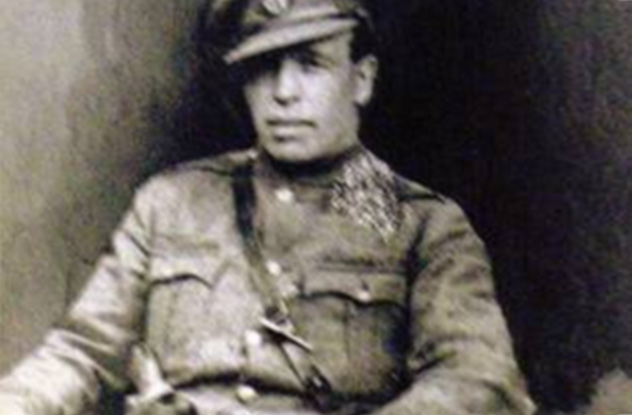
Just a few short years before Hitler came to power in Germany, he was just another right-wing agitator giving incendiary speeches in Munich. After one particularly provocative speech, Hitler was chased down by an angry mob of as many as 200 men.
Corporal Adolf Hitler lay on the ground being kicked to a bloody pulp. Some of his angry attackers drew bayonets and prepared to finish Hitler off and stab him to death. But just at that moment, eight men with weapons of their own intervened and stopped the angry men from killing Hitler.
One of those men was an Irishman named Michael Keogh. By a strange coincidence, Hitler had fought alongside Keogh in World War I. Michael Keogh was later almost executed by Nazi agitators during the Nazi’s murderous spree known as The Night of Long Knives.
8A World War I Gas Attack

In a 1918 battle in Belgium, a young corporal named Adolf Hitler was hit by a British mustard gas shell that could have easily taken his life. Tens of thousands of soldiers were killed by mustard gas in World War I, but Hitler was not one of them. After Hitler was hit by the gas shell, he was temporarily blinded and was taken to a nearby German military hospital.
Unfortunately for the rest of the world, Hitler experienced no serious injuries, and the blindness soon subsided. Hitler was able to continue fighting in World War I shortly after his recovery. Recently unearthed medical records indicate that Hitler was not blinded by the gas itself. He instead experienced temporary blindness as a result of mental illness or, as his doctor called it, “hysterical amblyopia.”
Hitler was so scarred by the incident that he banned the use of mustard gas on the World War II battlefield.
7A British Soldier Spares Hitler’s Life

That wasn’t Hitler’s only close brush with death during World War I.
Toward the end of the war, British soldiers captured and repaired a bridge the Germans had partially destroyed to prevent vehicle traffic to an occupied French town. After their battle had seemingly been won, a young British soldier, Henry Tandey, stopped to rest, having been wounded by German combatants in the fight over the bridge. It was then that he noticed a lone German soldier run out from cover in some bushes and flee.
Private Tandey took aim but lowered his gun when he noticed that the soldier was wounded. That German soldier was a 29-year-old Adolf Hitler. When asked about his show of mercy in 1940, Tandey said, “I didn’t like to shoot a wounded man.”
Years later, Tandey would wish he would have been a little bit less merciful when he and the British faced Hitler again in World War II.
6Hitler’s Car Accident

According to Otto Wagener, a high-ranking Nazi major general and economic adviser to Hitler, the Nazi dictator was nearly killed in a car accident in 1930.
On March, 13, 1930, a large semi-trailer truck crashed into Hitler’s Mercedes. The truck driver slammed the brakes just in time to stop the truck before it crushed Hitler’s car with Adolf inside it. Otto Wagener was a passenger.
Six months later, Hitler and the Nazi party seized power in Germany. No word on what happened to the truck driver after that. Had he been just a second slower to slam his brakes, he may have prevented Hitler’s rise to power altogether or at the very least injured him enough to jeopardize Hitler’s career.
An insurance claim signed by Hitler himself for damages to his Mercedes surfaced on eBay in 2000. The seller claims that a German insurance company uncovered Hitler’s insurance claim 70 years after it was filed.
5Suicide
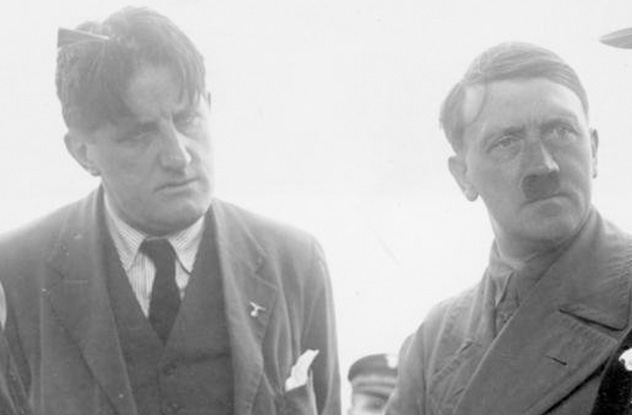
Despite Hitler’s extreme nationalism, a Harvard-educated German and his American wife were a part of his inner circle just before he came to power in Germany. Ernst “Putzi” Hanfstaengl and his wife Hellen first met Hitler when they moved to Munich from New York in 1921. Hellen would soon save Hitler’s life.
The couple first heard a young Hitler speak in a Munich beer hall and remained hooked by the tyrant’s diatribes thereafter. Hitler became close personal friends with Putzi and Hellen, even frequenting the couple’s apartment. They even participated in the Beer Hall Putsch, in which the Nazis unsuccessfully tried to seize power in Germany.
Afterward, the three fled to the couple’s home just outside of Munich. Here, Hitler became hysterically distraught as he faced the charges for high treason. Hitler proclaimed: “Now all is lost; no use going on!” He then lunged for his pistol in a nearby cabinet. But before he could turn the pistol on himself, Hellen grabbed his arm and took his pistol away from him entirely.
Soon after, the house was surrounded by police. The police raided the home and whisked Hitler away.
4Evading A Death Sentence
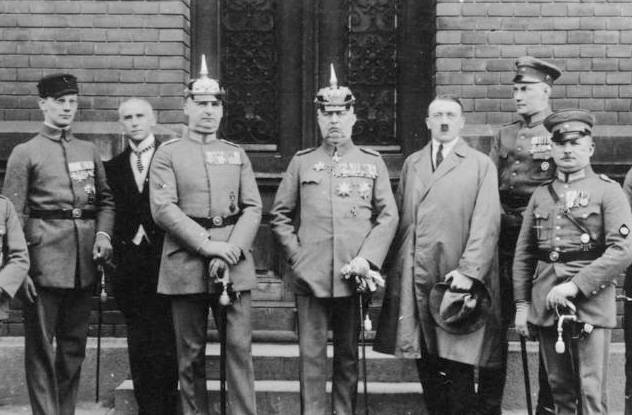
After the arrest, Hitler was charged with treason. The punishment for treason at the time in the Weimar Republic was death. And yet, oddly enough, Hitler was never put to death for his conviction for treason in 1923.
Shortly before Hitler’s trial, the Weimar government declared a state of emergency that drastically changed their judicial system. Consequently, Hitler would no longer have a trial by jury. Instead, judges would decide Hitler’s fate. The judge assigned to Hitler’s case, George Neithardt, was actually sympathetic to Hitler’s fascist views and even participated in Nazi-esque right-wing groups around the time.
Judge Neithardt abandoned giving Hitler any semblance of a legitimate trial and let Hitler lecture the public in court, using the trial as a vehicle for spreading his political messaging. As Hitler’s right-wing diatribes in court spread out to the general public, he skyrocketed to the top of fascist politics, which would allow him to seize power with the Nazi party shortly after.
Hitler was technically convicted of treason, but instead of receiving a death sentence, he was sentenced to five years in prison, of which he only served a mere nine months.
3Hitler’s Mother’s Unexpected Death
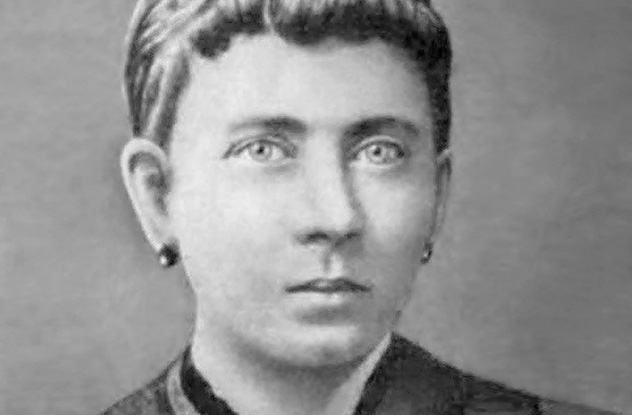
You may be expecting to read about Hitler’s rejection from art school as an accident that shaped his life and history, but that was no accident. Hitler was a terrible artist, and he was bound to be rejected from any and every art school he applied to. However, a sudden event around this time may have had a bigger impact: his mother’s death.
Hitler’s mother, Klara was diagnosed with and died soon after of breast cancer at the age of 47. Hitler was very close to his mother, and called her death a “dreadful blow” in Mein Kampf.
Hitler purportedly believed his mother’s death was not a result of breast cancer. Instead he thought she had been poisoned by a Jewish doctor. Consequently, this unexpected event may have inspired Hitler’s vitriolic hatred for Jews that would later lead him to carry out the Holocaust.
It was Hitler’s mother, Klara, who persuaded him to pursue his dream of becoming an artist, which he would abandon after his mother’s death.
2Lenin’s Sudden Stroke
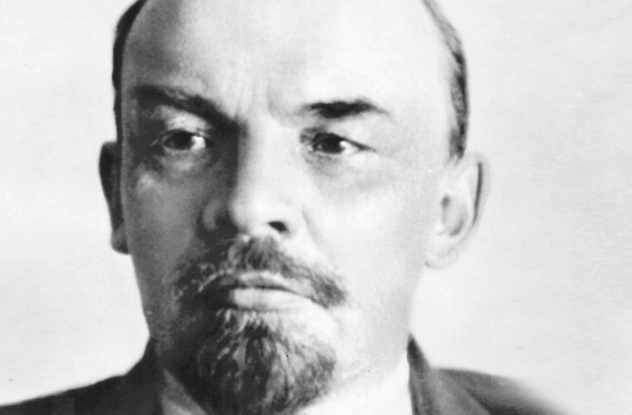
One of the biggest curveballs in human history has to be the sudden stroke and resulting death of Soviet revolutionary Vladimir Lenin. Had Lenin not suffered the sudden stroke, or if he’d just survived the aftereffects long enough to appoint close confidant Leon Trotsky as his rightful heir, the world may have never been cursed with the reign of Joseph Stalin and perhaps not Adolf Hitler’s rule either.
In his last testament, Lenin ordered that Stalin be removed from his position as general secretary. He certainly wouldn’t have wanted him to rule the Soviet Union. However, Stalin censored Lenin’s deathbed wishes and instead lied his way into the position of leader of the Soviet Union.
Much of Hitler’s rise to power, and his strategy for World War II, relied on a non-aggression pact with Stalin that kept the Soviet Union from attacking Nazi Germany as they began their quest for world domination. Had Lenin not suffered his stroke, or had Trotsky been the Soviet Union’s leader, such a pact would have never happened.
Trotsky was the first major world leader to denounce Hitler and the fascism spreading through Europe at the time. He once wrote: “What are the Hitlerites but human dust?” He actively worked with the German Communist party to stop Hitler and the Nazis before they came to power. He may have even intervened militarily to stop Hitler from starting World War II if Lenin had been able to appoint him as his successor.
Trotsky was also Jewish. If he had become the leader of the Soviet Union, he would have been the most powerful Jew in modern history. If anyone could have put a stop to the Holocaust, it would have been Trotsky. But more certainly, Trotsky would have prevented any fascist or Nazi power from taking over Europe, even if Hitler would have perished in any number of his brushes with death, and another fascist took his place.
Unfortunately for mankind, after Stalin seized power following Lenin’s death, Trotsky was exiled from the Soviet Union. He was later assassinated by Stalin’s henchmen in Mexico.
1Johann Georg Elser’s Failed Assassination Attempt

Perhaps you’ve heard about the famous failed attempt by high-ranking Nazi officials to assassinate Hitler in July 1944, as portrayed in the Tom Cruise film Valkyrie. But a lesser-known assassination attempt came just as close to killing Hitler and would have stopped him two years before World War II even began.
Unlike the Valkyrie plot, this 1939 assassination attempt was carried out by a lone wolf who held no position of power in the Nazi party. Instead, he was a German carpenter named Johann Georg Elser—the original Travis Bickle.
Elser was an ardent leftist in Germany, placing him on the opposite side of the political spectrum from Hitler and the Nazi party. Elser voted for the German Communist party at the time, which was the primary force opposing the Nazis in Germany. Communists would be among the first that Hitler and the Nazis would execute when they came into power.
After the Nazis took office, Esler developed such a disdain for Hitler and his politics that he quit his lifelong job as a carpenter and got a job in a German bomb factory. His specific goal was to use his new career to assassinate Adolf Hitler personally.
At his new job in the Waldenmaier armament factory in Heidenheim, Germany, Elser collected supplies to make a bomb of his own. After he built a bomb capable of killing Hitler, he spent a month hollowing out a pillar underneath the platform where Hitler would be giving his annual speech at the site of the failed Beer Hall Putsch. He planted the bomb before Hitler and his confidants showed up, timing it to explode as Hitler spoke.
However, this particular speech of Hitler’s happened to go shorter than usual. Because of bad weather, Hitler left the podium a few minutes before Elser’s bomb was timed to explode. When the bomb did explode, eight died, and 60 were injured, but Adolf Hitler was not one of them. The father of Hitler’s wife, Eva Braun, was injured in the attack.
After the assassination attempt, Elser tried to flee to Switzerland but was caught at the border. He was imprisoned and eventually executed for the act.
Nathan is a freelance journalist and screenwriter.



